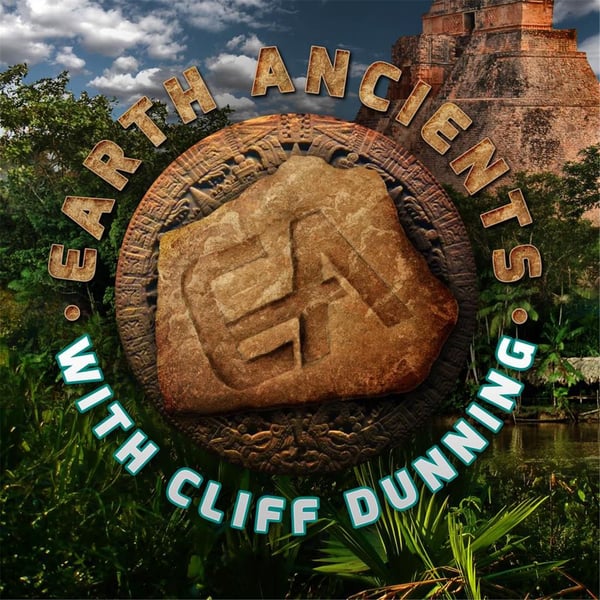David Dellenback & Martha Gil: The Lost People of San Agustin
Earth Ancients
Cliff Dunning
4.4 • 1.5K Ratings
🗓️ 19 April 2025
⏱️ 87 minutes
🧾️ Download transcript
Summary
The first scientific excavations took place here in the 1910s, though 17th-century tomb raiders had already plundered many sites for golden funerary artifacts. The archaeological parks date to 1931; they were named a UNESCO World Heritage site in 1995. Though large-scale scientific excavations mostly took place between the 1960s and 1990s, newer studies, conducted by the Colombian Institute of Anthropology and History between 2016 to 2022 using remote sensor technologies, are expected to shed new light on the culture over the coming years.
Roughly 600 statues lie near the town of San Agustín on the eastern slopes of the Colombian Massif. The Magdalena River, Colombia’s chief waterway, has its headwaters here. The river flows east through a sharp-hewn canyon, dividing the three associated archaeological parks where the statues seem to watch over elaborate tombs with portal-like dolmens and carved stone sarcophagi.The San Agustín Archaeological Park, on the western edge of its namesake town, is the largest of the trio, home to a small museum and a winding forest trail that doubles as an open-air exhibit of statues found elsewhere. The park also contains exposed burial mounds poking above manicured lawns and a sprawling monument carved into the stone bed of a trickling stream.
Davíd Dellenback was born in Oregon; he has lived in San Agustín since the 1970’s, an investigator and intepreter of the ancient Pueblo Escultor of the Macizo Colombiano. He has put together a comprehensive registry of their lithic statuary, with drawings of the stonework accompanied by descriptions, measurements, bibliography, notes on the history and movements of the monoliths, etc. He has also traveled widely in America in search of sites of ancient stone sculpture and stone-carving. As well, he has been involved in the movement to repatriate stone-sculptures stolen from the territory by huaqueros and academics. He is a member of the Veeduría de la Repatriación and of the San Agustín Academy of History.
Martha Gil was born in Bogotá, Colombia; she has lived in San Agustín for more than two decades. She is an “ex-lawyer”, a writer, educator and archaeological tourism guide. She is the translator and distributor of the works published by the couple, and is a partner in the investigations of the ancient Pueblo Escultor. In her Macizo Colombiano territory, she is a leader in efforts to repatriate cultural patrimony, and of the related community education and appropriation. She is a member of the Veeduría de la Repatriación.
The registry and investigation of the Pueblo Escultor is available at:www.puebloescultor.org(+57)3102164462
Become a supporter of this podcast: https://www.spreaker.com/podcast/earth-ancients--2790919/support.
Transcript
Click on a timestamp to play from that location
| 0:00.0 | It's always fun to delve into the topic of lost civilizations, unknown people, forgotten technologies, and the buildings, temples, pyramids, structures left to us by known and unknown people. |
| 0:34.7 | Hey, this is Cliff, your host of Earth Ancients. I hope you're doing well |
| 0:38.2 | today. Today we are going to South America and Columbia. And you know, years ago, when I first |
| 0:45.1 | started touring or traveling to Mexico and South America, I would run into museums. |
| 0:54.6 | Sometimes they were small, local museums and small towns. |
| 0:58.4 | Even the big regional museums in Mexico had very anomalous, very unusual skeletal remains |
| 1:06.9 | and artifacts from people that they weren't sure about. |
| 1:13.8 | And in many cases, and this is mostly the Maya, there's a very big reference of multiracial people, multicultural, multiracial, |
| 1:22.0 | meaning that there is, you know, and this is the big problem with archaeology. It's, it's known as diffusion, you know, and we've had this issue come up since we started this podcast over 10 years ago, where there is great similarities in perhaps pyramid construction, the way buildings are laid out, even all the way down to artifacts that are similar, |
| 1:47.7 | carving tools, the kind of stonework that's been used. |
| 1:52.5 | And this is a huge problem. |
| 1:54.6 | You know, it's a huge problem for the academia because they want to hold on to the line that |
| 1:59.2 | there was no migrations, no migrations from Europe to South America, |
| 2:05.3 | Europe to Mexico or North America, anywhere else. Migrating is not part of the whole archaeological |
| 2:15.3 | paradigm. And this just doesn't make sense anymore. And they fight, they fight |
| 2:21.5 | to maintain this. Even in the face of real great evidence of people migrating from China to |
| 2:31.6 | Mexico, this is what some of the people believe are the Almec. People are very |
| 2:37.6 | Asiatic. But in the case of the Maya, we really see it. You really see it in their sculptures, |
| 2:44.6 | in their reliefs. You see Caucasians. You see African-centric people. You see Asiatic people. And what we're talking about |
| 2:53.9 | today is people who have come and gone, either through evolution, environmental changes and |
| 3:03.3 | they can't support their body types, or perhaps they just left. |
| 3:09.4 | And this could be off-world types who came, settled, enjoyed Earth's bounty, |
... |
Please login to see the full transcript.
Disclaimer: The podcast and artwork embedded on this page are from Cliff Dunning, and are the property of its owner and not affiliated with or endorsed by Tapesearch.
Generated transcripts are the property of Cliff Dunning and are distributed freely under the Fair Use doctrine. Transcripts generated by Tapesearch are not guaranteed to be accurate.
Copyright © Tapesearch 2025.

